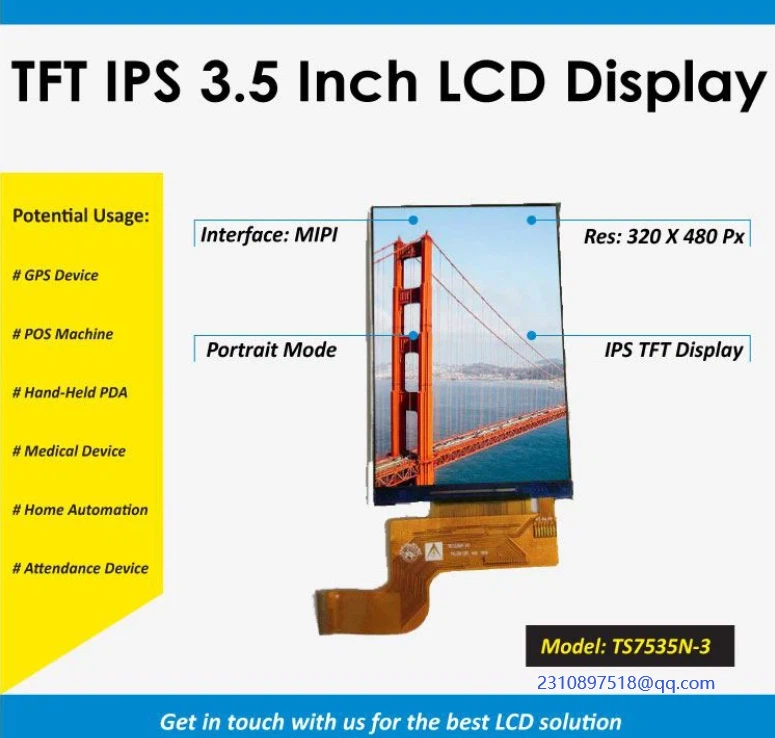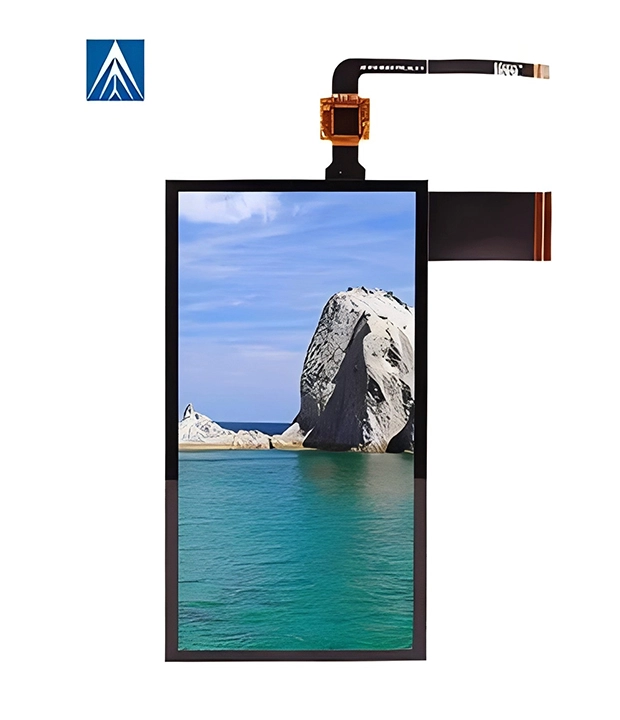When considering a TFT for a mobile product such as a GPS or diagnostic device, there are a few key criteria to pay attention to.
Most times, mobile devices run on battery power. A display that draws a lot of power could quickly drain the battery of your product, resulting in many battery changes or a lot of time waiting for a recharge. So, one has to always pay attention to the power consumption of a LCD.
As with other LCD technologies, LED back-lights are the leading factor in power consumption for TFT's. If low power is the most important design consideration, one option to choose from is Transflective TFT's. Transflective TFT's offer sunlight readability even with the backlight powered off. Transflective TFT's, however, also have a higher price tag and the display color tends to wash out when used in high brightness environments. For more information on this, see the following application note about transflective TFT's.
Most TFTs are transmissive. These types of displays are less expensive and are only readable while the backlight is powered on. When using this style of display, it may be important to implement sleep and dimming functions into the software to save power. Dimming the display can greatly reduce power drain and can provide a longer run-time without getting recharged.
If dimming the display will reduce power consumption, it may seem obvious that increasing a displays brightness will also increase power consumption. Unfortunately, if you are using a transmissive TFT in a high brightness application, the only way to improve the readability is to make the display brighter.
To compete with the sun, TFT's require a brightness of 700 Nits or higher. Some displays are rated as high as 2,000 Nits.
While increasing the displays brightness or using a transflective TFT will always be the first steps in making a display readable in high ambient light conditions, another useful step is to incorporate a coating to deflect some of the sun's rays and reduce reflections on the display. Anti-glare and anti-reflective coatings can help to make the display more readable in high brightness situations since they can drown out some of the reflections that make the display unreadable.
But, if you are working on a device that will be always used in inside then sunlight readability can look under and can use dimming to save energy.
TFTs have several different interface options available. And you can select as your requirements:
HDMI is the easiest interface for integrating an LCD to your mobile product. The cost is higher but may be worth it for small production runs or quick development.
MIPI- DSI is becoming an increasingly popular interface due to it's low pin count and high speed. And we always prefer it for a quick response.
SPI also uses few pins similar to MIPI, however, at a slower data rate which will not work for displaying video or driving high resolution displays.
MCU and RGB (Red/Green/Blue) have a fast data exchange capable of video, but more time consuming with more I/Os (in/Outs) to program.
One way for a user to interface with your mobile device is through the use of Touch Panels (TP) , which are standard equipment on most TFTs. The two most common are Resistive and Capacitive. Additionally, the user can interface the device though components like tactile switches.
Resistive touch panels detect touches by sensing pressure on the screen making them usable with gloves, or any other materials. These touch panels often lack multi-touch and gesture capabilities.
Capacitive touch panels are the type of touch screens used on most smart phones and feature multi-touch and gesture capabilities. They sense inductive materials such as a finger or stylus, which allow them to work without needing to add force.
The above feature you always should consider when you are looking for LCD for your next project.
For any kinds of LCD, you can relay on Shenzhen Techstar Electronics. With our 22 years experience we can help you with your LCD need and can suggest the best LCD for your project. We have been working with some of the world's biggest brand and a lot of smaller brands home and abroad. From East Asia to Europe, from Russia to USA we have a strong footprint. From 1.2 inch to 10.1 inch whatever size you want, we can provide you with a perfect result.
Please feel free to let us know how we can help you with your LCD solution at below:

